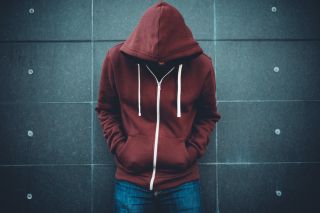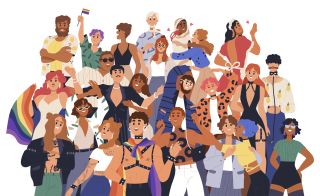Adolescence
The Second Adolescence of LGBTQ+ Adulthood
How growing up in an anti-queer world can stunt us and what we can do about it.
Updated June 14, 2023 Reviewed by Abigail Fagan
Key points
- Many LGBTQ+ people had an adolescence marked by the limiting and harmful impacts of anti-queerness.
- This leads many to feel like teenagers as we pursue dating and authenticity in adulthood after coming out.
- A Second Adolescence involves addressing the experiences we missed and wounds we accrued in first adolescence.
Note: This post uses“LGBTQ+” and “queer” interchangeably as umbrella terms for people with non-cisgender and heterosexual identities.
Many LGBTQ+ adults did not get the adolescence our cisgender, heterosexual peers had access to.
The adolescence of crushes without shame and giggles about those crushes with friends. The adolescence of beginning dating; obtaining romantic and sexual firsts with people we truly desired. The adolescence where we could be seen and known by those who mattered to us. The adolescence where we didn’t suffer from constant messaging about the wrongness of feelings that swirled within us.

Adolescence is a vital life stage with regard to self and identity development. Previously thought of as occurring between the ages of twelve and seventeen, we now extend our understanding of adolescence into the person’s early twenties. In addition to physiological maturation, this period in a human’s life is marked by immense potential for psychological and social development. So much potential, that is, unless something gets in the way.
The emergence of a person’s sexual and romantic identities is a cornerstone of adolescent development. For LGBTQ+ people, this experience is complicated by discovering sexual and romantic (and/or gender) identities that differ from what we were socialized to believe we should inhabit.
Many LGBTQ+ folks grew up with direct and indirect messaging about the wrongness, sinfulness, or weirdness of being non-cisgender and/or non-heterosexual. Though times are slowly changing, we still live within a world with anti-queerness and heteronormativity embedded within its culture. This is evident in the past and current presence of anti-queer legislation, religious belief systems, and through portrayals of humans and relationships in the media.
What is the impact on the young queer person navigating adolescence in an anti-queer world? What happens (or doesn’t happen) to us?
As a result of growing up within this cultural context, many LGBTQ+ people did not experience an adolescence where we felt able to live fully and safely as our true selves. Instead, many of us experienced an adolescence marked by significant interruptions to our healthy development, boiling down to two primary impacts:
- Missing out on integral psychosocial developmental experiences
- Suffering from the trauma of chronic shame caused by anti-queerness
Many LGBTQ+ adults in our post-coming out years find ourselves feeling stunted, underdeveloped, and behind in comparison to our cisgender, heterosexual peers. Many of us express feeling as though we are teenagers as we begin to pursue dating, relationships, and authenticity as adults. In many ways, we were/are still those teenage selves; the combination of missing out on key developmental experiences and suffering from chronic shame both stunt developmental growth.
Robbed of our first chance at the adolescence we deserved, we end up needing a second adolescence.
What is Second Adolescence?

Second Adolescence is a developmental life stage LGBTQ+ adults move through in adulthood after growing up in an anti-queer world. It is a framework for queer healing and liberation that invites understanding the wounding anti-queerness causes for LGBTQ+ people growing up and what we can do about it in adulthood.
While each person’s second adolescence will be unique, there are two overarching tasks to engage with to move through one’s second adolescence.
First, we must address the experiences our younger selves missed.
This involves:
a) gaining these missed experiences (i.e., first kisses, dates, relationships, sexual experiences, having our identities be known within important relationships, authentically dressing and expressing ourselves, etc…), and
b) reckoning with what it means to have missed those experiences in our first adolescence (i.e., acknowledging and processing feelings of grief).
Second, we must address our internalized anti-queerness.
This involves:
a) exploring our exposure to anti-queer messages growing up and how these impacted our younger selves (i.e. internalization of shame-based beliefs about ourselves, gender, sexuality, and relationships),
b) examining the ways in which these internalized anti-queer beliefs may still be operating within us, dictating decisions we make and feelings we hold about ourselves, and
c) gradually begin the work of unlearning limiting internalized beliefs and inviting ones of affirmation and validation.
Through navigating these tasks, LGBTQ+ people can move towards the primary goal of second adolescence which is to experience liberation from shame and exist as our most true and free LGBTQ+ adult selves.
Why is it helpful for LGBTQ+ people to acknowledge our Second Adolescence?
Viewing our experience as going through or having gone through a Second Adolescence can offer LGBTQ+ people much needed validation. It’s not uncommon for LGBTQ+ people in our post-coming out years to feel embarrassed or ashamed for feeling inexperienced or overwhelmed when pursuing dating, feeling like a teenager in an adult's body. Inviting in the perspective of needing a second adolescence because our world didn’t allow us to fully have our first can give empathic reasoning for how we are thinking, feeling, and behaving.
In addition to validation, looking through the lens of Second Adolescence can help LGBTQ+ adults find increased access to a notable healing tool of self-compassion. It can give us more space to understand the how, what, and why’s of our experiences past and present. This can help us intercept additional shame from being internalized and experience more space to offer healing to the wounds of our younger selves.




